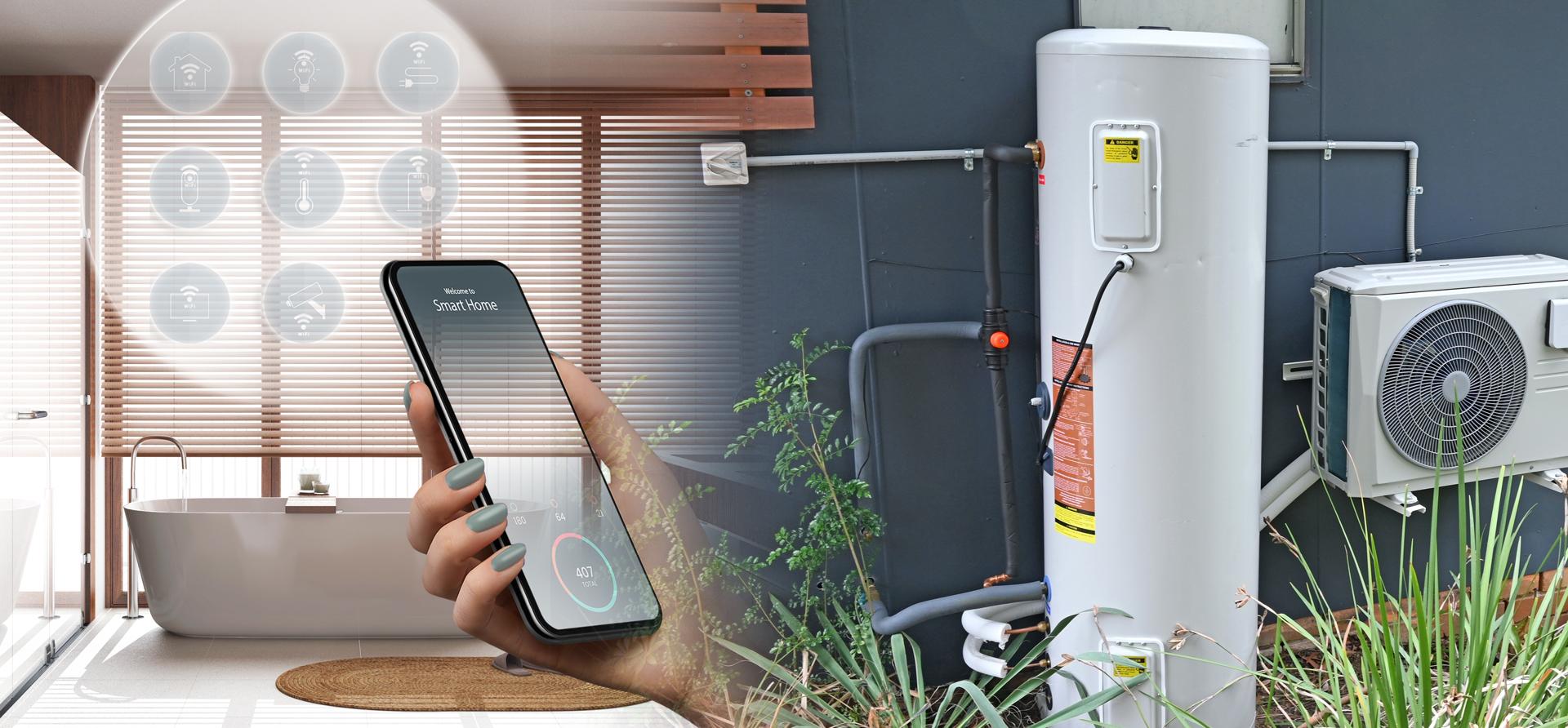How a timely shift in water heating can yield massive savings

Key Findings
Improving efficiency and flexibility of water heating can significantly reduce this major cost for households and for the entire electricity system.
Hot water systems in Australia should be dynamically managed, to heat when there is abundant renewable electricity.
Government subsidies and standards should be updated to ensure all hot water systems sold in Australia are efficient and smart, as a futureproofing and cost-saving measure.
For about 70 years, most electric hot water systems (HWS) in Australia have been turned on to heat overnight through the use of “ripple control” on a separate controlled load circuit in homes. This was done to soak up “excess” coal-fired generation, and effectively created a baseload overnight demand. Now household rooftop solar systems collectively produce more electricity than any single coal-fired power station in Australia, and some water heating has moved to the middle of the day to soak up this abundant solar generation.
This can be done in two ways:
- Passive management – through timers on devices or ripple control times set by distribution networks for systems on controlled load circuits and tariffs.
- Dynamic management – a form of ripple control via WiFi or other means where water heating periods are set by the owner or a third party, with the owner’s permission, and where usage can be adjusted in response to changing conditions.
There have been changes to daytime operation for ripple control by some distribution networks on some controlled load tariffs. Passive management is a partial solution to unlocking the flexibility available in HWS but as we move rapidly towards 82% renewable generation by 2030, it will be more valuable to have dynamic management or “smart” HWS. For example, at times in Victoria’s winter, when solar generation is lower than usual, it may be more cost effective to heat water when onshore – and from 2032 – offshore wind power generation is available.
Researchers at the University of Technology Sydney developed four scenarios for the electrification of domestic hot water with flexible demand potential (see table). Under the Rapid Electrification scenario, with no sales of residential gas hot water after 2025, all HWS are electrified and able to be dynamically managed by 2035. Consumers would save of up to $6.7 billion a year by 2040, with 22 gigawatts (GW) or 45 GW hours per day of flexible demand available, roughly two-thirds of peak demand.
Table: Flexible demand capacity and depth scenarios for 2040

However, there are no requirements for HWS sold in Australia today to be smart. A consumer looking to buy a new heat pump HWS can’t rely on a Minimum Energy Performance Standard (MEPS), as there is for electric storage HWS, but even these standards date from 2012. Heat pump HWS are three to four times more efficient than resistive electric HWS, and their purchase is supported by subsidies in many states. On 19 July 2024, Energy Ministers agreed to introducing MEPS for heat pump HWS a high priority, which is a great step, but flexibility considerations were not part of this decision.
Victoria is the only state to require any appliance flexibility requirements – a timer – to qualify a heat pump hot water subsidy. The lack of requirements for subsidised HWS to be “smart” is a missed opportunity to create cheap, flexible demand that grows with every subsidised hot water system installed.
A new briefing note from the Institute for Energy Economics & Financial Analysis (IEEFA) makes several recommendations to support the uptake of smart HWS, including:
- The South Australian government should immediately cease subsidising the purchase of gas HWS.
- State governments in Victoria, NSW and South Australia expand their subsidy schemes, and the federal government expand the Renewable Energy Target (RET), to include a requirement that heat pump HWS can be dynamically managed.
- All HWS sold in Australia should be required to be installed so that they can be dynamically managed unless there is a rooftop solar system installed whereby passive management may be sufficient. Either way, flexible smart HWS should be required to reduce emissions and costs for consumers. The federal government in conjunction with state and territory governments should investigate which of the following smart requirements for HWS should be introduced nationally:
- Communication capability/ open communication protocol, such as WiFi connectivity, especially for heat pump HWS given that most brands already offer this;
-Connection to a smart meter as an alternative form of dynamic management;
-Connection to a home energy management system (HEMS) as an alternative form of dynamic management; and
- Installation of a solar diverter with a timer or other control system as an alternative form of passive or dynamic management.
These recommendations are not about whether or by whom any HWS will be managed, but whether new HWS are smart. Any passive or dynamic management of a new HWS will be the owner’s choice. Most HWSs have been passively managed by ripple control for about 70 years so this is not a new concept for distribution networks or consumers.
It is important for these HWS requirements to be in place as soon as possible given how fast households are electrifying. The UTS research shows there is a $6.7 billion missed opportunity if newly electrified HWS are not able to be used as a flexible resource.
This article first appeared in Renew Economy.















